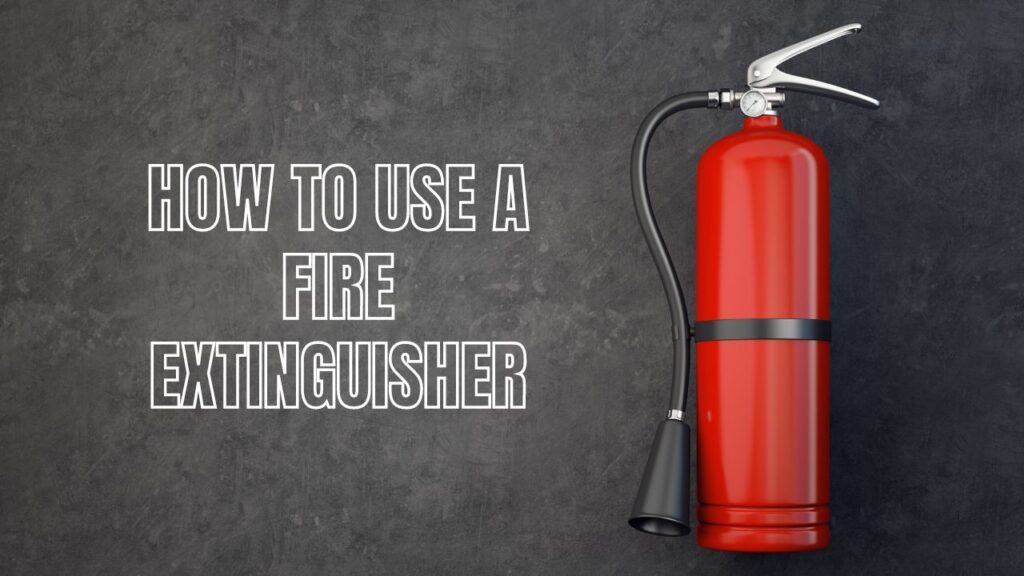Fires are unpredictable emergencies that can occur in various settings, from homes and offices to industrial complexes. Being prepared to handle a fire is crucial for your safety and the safety of those around you. The ability to effectively use a fire extinguisher can mean the difference between a minor incident and a major disaster.
In this comprehensive guide, we will dive into the essentials of using a fire extinguisher, providing you with valuable insights on how to choose the right type, inspect it for safety, and employ it to extinguish different types of fires.
What is Fire Safety and Why You Should Read About It
Fire safety is a crucial life skill that every individual should have. Fires can escalate rapidly and become life-threatening, making it crucial to have fire protection knowledge and tools necessary to respond effectively.
Understanding Fire: The Basics Before Extinguishing
Before we delve into the specifics of using a fire extinguisher, let’s start by understanding the nature of fire itself. Fires result from the rapid combination of oxygen, heat, and fuel. Different types of fires require different approaches for effective extinguishing. By comprehending the basics of fire, you’ll be better equipped to make informed decisions in emergency situations.
Choosing the Right Fire Extinguisher
Different classes of fires require different approaches. Familiarize yourself with the following fire extinguisher classifications:
- Class A: For fires involving ordinary combustibles like wood and paper.
- Class B: Suitable for flammable liquids such as oil and gasoline.
- Class C: Designed for electrical fires, like those involving appliances and wiring.
- Class D: Used on combustible metals like magnesium or titanium.
- Class K: Specifically for kitchen fires involving oils and fats.
Locating the Nearest Fire Extinguisher
Quick access is crucial during a fire. Make sure you know where the nearest fire extinguisher is located, whether at home, in the office, or in public spaces. It’s also important to ensure the extinguisher is well-maintained and not expired.
Inspect the Situation
Before attempting to use an extinguisher, assess the fire’s size and intensity. If the fire is too large, it’s safer to evacuate and call the fire department.
How to Use a Fire Extinguisher: P.A.S.S. Method
Remember the acronym P.A.S.S. for proper usage:
- P – Pull the pin: This unlocks the extinguisher.
- A – Aim at the base: Point the nozzle at the fire’s base, not the flames.
- S – Squeeze the lever: Press the handle to discharge the extinguisher agent.
- S – Sweep from side to side: Move the nozzle from side to side while aiming at the base of the fire.
Maintaining Safe Distance
While utilizing the extinguisher, keep a safe distance from the fire. The recommended distance is about 6 to 8 feet (1.8 to 2.4 meters).
Monitoring and Reassessment
Even if the fire seems to be out, it’s important to monitor the area for re-ignition. If the fire reignites, repeat the extinguishing process.
Evacuation and Professional Help
If you’re unable to extinguish the fire, prioritize your safety and evacuate the area at the nearest fire exit. Call the fire department immediately.
Important Reminders for Fire Extinguisher Use
- Keep your back to a clear exit when attempting to fight a fire.
- Stand about 8 feet away from the fire and move closer as it diminishes.
- Sweep the hose from side to side to cover the entire area of the fire.
- If you’re unable to extinguish the fire or it grows beyond control, evacuate immediately.
Types of Fire Extinguishers and Their Uses
There are different types of fire extinguishers to put, labeled as A, B, C, D, and K, each designed to tackle specific types of fires.
Water Extinguishers (Class A)
Water extinguishers are suitable for fires involving ordinary combustibles like wood and paper. The water soaks into the material, cooling the flames and extinguishing the fire.
Foam Extinguishers (Class A and Class B)
Foam extinguishers are versatile, capable of extinguishing both Class A and Class B fires. The foam creates a barrier that suppresses the fire’s oxygen supply.
Carbon Dioxide (CO2) Extinguishers (Class B and Class C)
CO2 extinguishers work by displacing the oxygen around the fire, suffocating it. They’re effective on flammable liquids and electrical fires.
Dry Chemical Powder Extinguishers (Class A, Class B, and Class C)
These extinguishers cover a range of fire types and work by interrupting the chemical reactions necessary for a fire to occur.
Wet Chemical Extinguishers (Class K)
Wet chemical extinguishers are intended primarily for kitchen fires that involve cooking oils and fats. The extinguishing agent reacts with the oil to create a barrier.
Proper Fire Extinguisher Maintenance
Simply having extinguishers on hand is not enough. Regular maintenance ensures they’re operational when needed:
- Check the pressure gauge regularly.
- Inspect for visible damage or corrosion.
- Ensure the pin and tamper seal are intact.
- Shake dry powder extinguishers monthly to prevent settling.
Conclusion: Your Power to Combat Fires
In the event of a fire emergency, knowing how to use a fire extinguisher could save your life and the lives of others. Portable fire extinguishers are effective instruments for containing and extinguishing minor fires before they spread. By understanding the different types of fires, the right type of fire extinguisher to use, and the correct techniques for extinguishing a fire, you become a proactive participant in fire safety.
Always remember that the top of the extinguisher is the “business end” and should be aimed at the base of the fire. Regularly inspect your fire extinguishers, ensure they are easily accessible, and familiarize yourself with the operating instructions. Evacuate if the fire is beyond your control, and don’t hesitate to call 911 or the local fire department.
Callaway Security offers fire alarm services to add more protection to you and your property. Contact us today!









